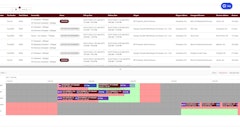
Perishable food shipments are one of the most demanding for transportation providers not only because of their time- and temp-sensitive characteristics, but food safety concerns as well. And while the cold chain keeps getting longer and more complex, the transportation options too are changing right along with it.
There was a time when rail handled the vast majority of food shipments in this country. During the 1800’s, farmers and ranchers turned to rail to move fruits, vegetables, and dairy and meat products up to 1,000 miles away. In 1867, the first patented refrigerated rail car opened up new markets for food shippers. Although it was crude by today’s standards, the huge blocks of ice placed at either end of those first reefer rail cars got the job done.
Union Pacific Railroad built huge ice houses along its main lines to support the early cold chains, which carried commodities such as fresh meat from Kansas City to Los Angeles and strawberries from L.A. to Chicago, according to the railroad’s Web site.
Eventually, natural ice proved unsanitary and inefficient for keeping perishable food shipments cool during the rail trips. Mechanically manufactured ice arrived on the scene around the turn of the century and so did services like The Pacific Fruit Express Company—a partnership between Southern Pacific and Union Pacific Railroads.
But, refrigeration units small enough for use in the transportation sector weren’t available until the late 1940’s. Railroads enjoyed their dominance for a relatively short time, however, as aging box cars combined with the completion of the Interstate highway system prompted perishable food shippers to migrate to truck transportation.
At that point, it seemed that rail might never be a major player in the cold chain again. It wasn’t due to unavailability of equipment so much as poor service levels. Nonetheless, a commitment by Class I railroads in the 1990’s to ‘get back on track’ has paid off in recent years.
This month’s cover story on the road-to-rail conversion highlights developments in the intermodal rail sector that are getting noticed by food shippers. Nick Pacitti, a longtime contributor to Food Logistics and a partner with Sterling Solutions, provides a sidebar on page 20 that discusses a new service—Green Express—that will launch in the next few months. He provides additional coverage on this topic in the Cool Insights column on page 16.
It’s not just rail that’s attracting more food shippers; major ocean lines like Maersk and others are continuing to build their presence in the global ocean reefer trade and opening up even more transportation options for food shippers—ones that were unheard of up until a few months ago. Check out our sector report on page 50 for more on these developments.
Enjoy the read.






























